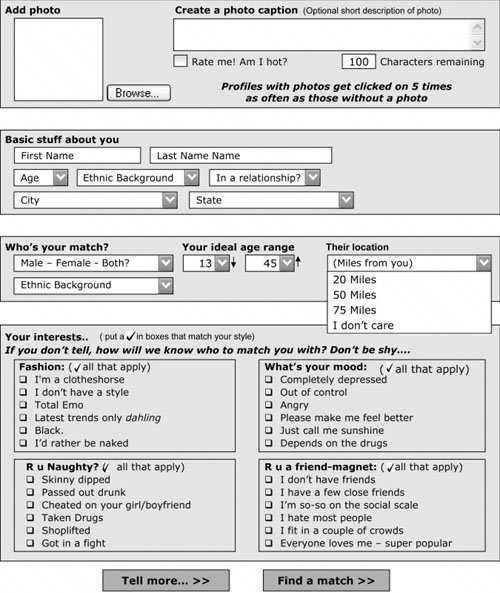Assessing the Risks
| Online dating has become considerably more common in recent years. Among single Internet users looking for a partner, 37 percent have visited an online dating site. The majority of these people report having had a positive experience, according to Pew Internet & American Life Project research published in March 2006. Additionally, the report indicates that 31 percent of American adults say they know people who have used a dating site. About half of those people know someone who has been in a long-term relationship or who is married to a partner they met online. Still, as with all other online activity, online dating requires you to be cautious and take steps to protect yourself. According to the same Pew Internet & American Life Project research, about 66 percent of Americans feel that online dating is dangerous (only 25 percent do not believe online dating is dangerous) because of the risks associated with placing personal information online. Indeed, as I've stated many times in this book, it is true that placing personal information in a publicly accessible location can pose risks that should be considered and mitigated. To help minimize your risks, carefully research dating sites to find one that is a good match for you, does not make your information publicly available, has clear safety precautions, and provides users with safety advice. Then consider how your own actions might help protect you or expose you to more risk. As illustrated in the opening story, one risk of online dating is having your photo stolen and used in ways you would never approve of. Having your photo stolen and abused can leave you feeling violated and humiliated. It can even pose a physical risk to you if someone who sees your faked image arranges to meet you and assumes that you will behave in the way the fake postings claim you do. Although reputable dating service providers are constantly on the lookout for this type of fraud and respond immediately to remove fake ads if you notify them, some dating sites are far less diligent. In addition, personals can be posted on other sites, such as online classifieds and blogs. In fact, at this point in time, I'm not aware of any dating site that provides countermeasures to prevent the copying of either your image or your text. Think About It Your photo can live online forever and come back to haunt you in many ways for years to come. Think carefully before posting personally identifiable or suggestive images for public viewing. While this alone will not guarantee that your picture isn't abused, the chances of that happening decrease substantially. Photo theft is only one potential concern. Cybercriminals can often learn a great deal from a personal ad and a couple of online conversations. Many online daters provide enough information about themselves for anybody to locate them fairly quickly. This places daters at risk of robbery, identity theft, or physical assault. In Jansen's posting shown in Figure 11-1, anybody could get his full name, address, phone number, when his house will be empty, a physical description, and a clear sense of his values and biases. Figure 11-1. Many online daters give away lots of information very quickly. The goal of successful online dating is to eventually meet offline, which comes with the trade-off of losing your online anonymity. Be cautious about putting yourself at risk by offering too much information too soon, or proceeding to an offline relationship too quickly. Always follow your instincts: If you feel like someone is moving too quickly or asking for too much personal information, shut off the communication. The way that free sites (especially teen dating sites) make money is usually through advertising and gathering and selling data, a practice called data mining. They are therefore highly motivated to encourage you to return to the site often and to get you to provide information. Because of this, some sites push you to reveal considerably more than you should (see Figure 11-2). If you choose to not leave a photo of yourself, you might receive a message such as "People who don't post photos don't get very many dates." Or, if you prefer not to enter as much personal information as is being asked for, you might see text that tells you "Enter enough information to make yourself sound exciting to a potential partner." Some of these sites also have extremely broad ideas about appropriate dating ranges, such as "14 years old to 45 years old"! Figure 11-2. Typical methods to convince you to share more than you should |
EAN: 2147483647
Pages: 157